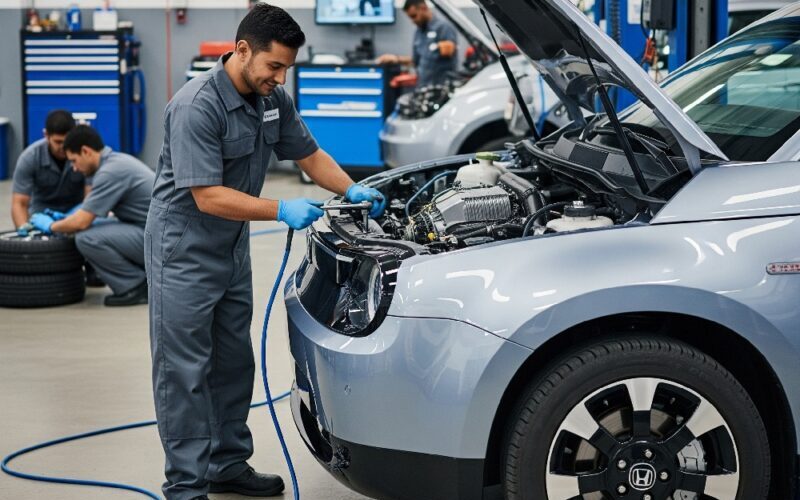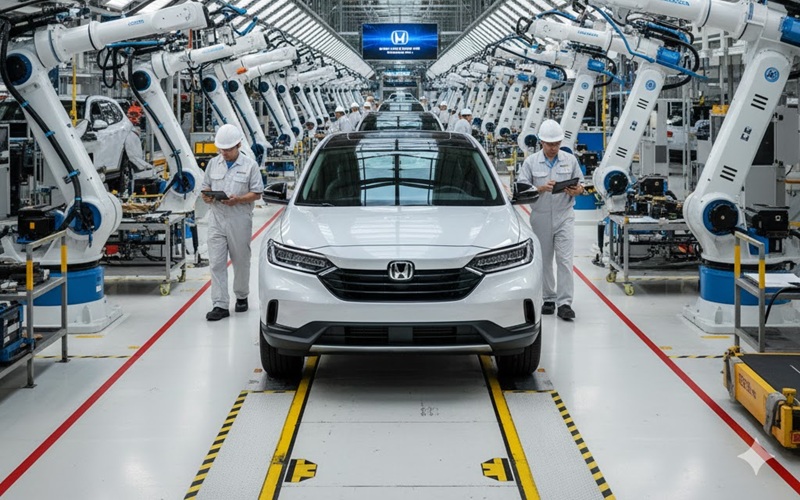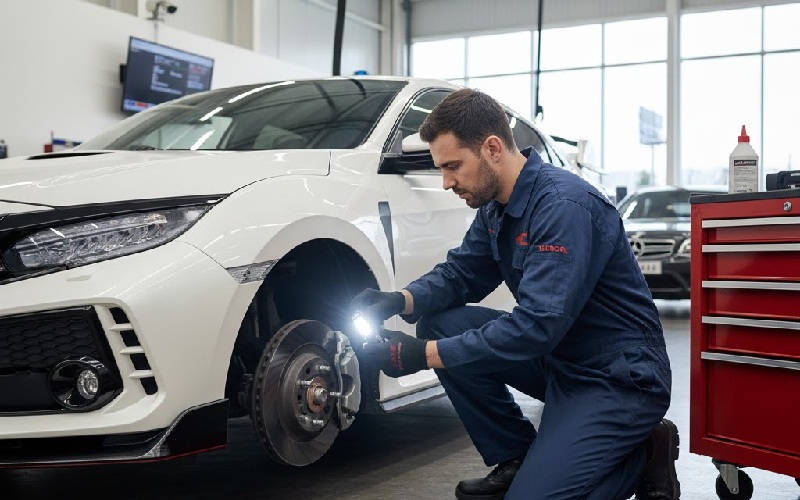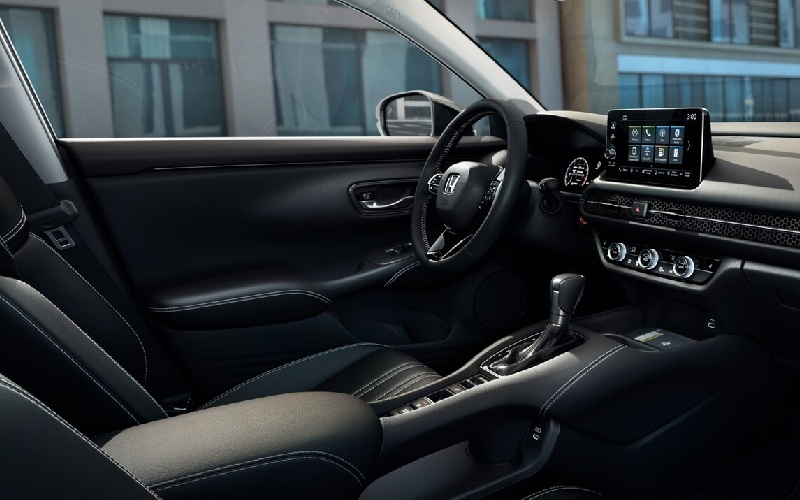The Honda entry into the electric vehicle market marks an important step in the company’s commitment to sustainable transportation. While electric vehicles (EVs) generally require less maintenance than their internal combustion counterparts, they still need regular attention to ensure optimal performance, safety, and longevity. Let’s explore the mandatory service requirements for Honda electric vehicles, focusing on the key maintenance items owners should never neglect.

Honda Electric Vehicles: The Lineup
Honda electric vehicle offerings continue to expand, with the Prologue SUV representing the brand’s first dedicated all-electric model available to consumers. This vehicle brings renowned reliability and quality to the electric segment, combining the practicality Honda is known for with zero-emission technology.
Honda Prologue
The Honda Prologue is a fully electric SUV with an estimated range of up to 452 kilometers on a single charge. As the flagship Honda electric vehicle, it incorporates advanced battery technology and electric drive systems that require specific maintenance protocols to ensure optimal performance and longevity.
Maintenance Minder System for Electric Vehicles
Like their conventional counterparts, Honda electric vehicles utilize the Maintenance Minder system to alert owners when service is required. However, the system has been adapted specifically for EV requirements.
How EV Maintenance Minder Works
The Maintenance Minder system in Honda EVs monitors various vehicle systems and displays codes when service is needed. The system calculates maintenance needs based on:
- Distance traveled
- Battery charge/discharge cycles
- Climate conditions
- Driving habits
- Time elapsed since last service
When maintenance is required, the system will display specific service codes in the driver information interface, with letters and numbers indicating the type of service needed.
Mandatory Service Items for Honda EVs
While electric vehicles eliminate many traditional maintenance items like oil changes and spark plug replacements, several critical service requirements remain essential.
High-Voltage Battery System Inspection
One of the most crucial maintenance items for any electric vehicle is the regular inspection of the high-voltage battery system:
- Inspection interval: Every 24 months or 48,000 kilometers
- Service includes:
- Battery health check
- Cooling system inspection
- High-voltage connection inspection
- Isolation test
- Battery management system diagnostics
This comprehensive inspection ensures the heart of your Honda EV remains in optimal condition, preserving both range and performance.
Brake System Service
Electric vehicles utilize regenerative braking, which reduces wear on traditional friction brakes. However, this reduced usage can actually create other issues:
- Inspection interval: Every 12 months or 24,000 kilometers
- Service includes:
- Brake pad thickness measurement
- Rotor inspection
- Calliper function check
- Brake fluid exchange (every 3 years regardless of distance)
- Regenerative braking system diagnostics
Because EVs use friction brakes less frequently, moisture and corrosion can become issues if not regularly inspected and serviced.
Cabin Air Filter Replacement
The cabin air filter is especially important in EVs, as the climate control system directly impacts battery range:
- Replacement interval: Every 24,000 kilometers or when the Maintenance Minder indicates
- Service includes:
- Filter replacement
- HVAC system inspection
- Pollen and particulate filtration check
A clean cabin air filter ensures efficient climate control operation, which helps maximize driving range.
Cooling System Service
Honda electric vehicles employ sophisticated cooling systems to maintain optimal battery and power electronics temperatures:
- Inspection interval: Every 24 months or 48,000 kilometers
- Service includes:
- Coolant level and condition check
- Cooling pump operation verification
- Heat exchanger inspection
- Thermal management system diagnostics
- Coolant replacement (at 10 years/200,000 kilometers)
Proper cooling system function is critical for battery longevity and consistent performance across varying climate conditions.
Tire Rotation and Inspection
Electric vehicles typically place different demands on tires due to their instant torque and heavier weight:
- Service interval: Every 12,000 kilometers
- Service includes:
- Tire rotation
- Pressure adjustment
- Tread depth measurement
- Alignment check
- Tire condition inspection
Regular tire maintenance ensures optimal efficiency, which directly impacts the vehicle’s driving range.
Annual Inspection Requirements
Beyond the specific maintenance items tracked by the Maintenance Minder system, Honda recommends annual inspections for all electric vehicles.
12-Month Inspection
The annual inspection covers critical safety and performance systems:
- Suspension components
- Steering system
- 12-volt auxiliary battery
- Exterior lighting
- Wiper blades and washer fluid
- Drive system (reduction gear fluid inspection)
- Body and underbody inspection for corrosion
These inspections help identify potential issues before they become serious problems, maintaining both safety and vehicle value.
Honda EV Warranty Considerations
Regular maintenance is essential not only for vehicle performance but also for warranty protection.
High-Voltage Battery Warranty
Honda electric vehicle batteries come with a comprehensive warranty that covers defects in materials and workmanship:
- Coverage period: 8 years or 160,000 kilometers
- Capacity coverage: Guarantees at least 70% of original capacity
To maintain this warranty coverage, owners must follow all prescribed maintenance requirements and retain service records.
EV System Component Warranty
The electric powertrain components also receive extended warranty coverage:
- Coverage period: 8 years or 160,000 kilometers
- Components covered:
- Electric motors
- Power inverter
- Reduction gear
- High-voltage wiring
- Onboard charger
Adherence to the mandatory service schedule is required to maintain this warranty protection.
Charging System Maintenance
The charging system requires periodic inspection to ensure safe and efficient operation.
Charge Port Inspection
The vehicle’s charge port should be regularly inspected:
- Inspection interval: Every 24,000 kilometers
- Service includes:
- Connection cleaning
- Seal inspection
- Damage assessment
- Latch mechanism verification
This inspection helps prevent charging issues and ensures reliable connection with charging equipment.
Home Charging Equipment
While not part of the vehicle itself, Honda recommends regular inspection of home charging equipment:
- Inspection interval: Annually
- Check for:
- Cable damage
- Connector wear
- Proper grounding
- Secure mounting
Although not technically a vehicle service item, charging equipment maintenance is crucial for a seamless EV ownership experience.
Software Updates
Unlike traditional vehicles, electric vehicles benefit significantly from software updates that can enhance performance, range, and features.
Over-the-Air Updates
Honda electric vehicles can receive some updates wirelessly:
- Update frequency: As available (typically several times per year)
- Update contents:
- User interface improvements
- Range optimization
- Climate control efficiency
- Navigation system updates
- Minor system optimizations
These updates happen automatically when the vehicle is connected to Wi-Fi or a cellular network.
Dealer Software Updates
Some updates require dealer equipment and cannot be performed over-the-air:
- Update interval: During regular maintenance visits or when specifically recommended
- Update focus:
- Battery management system
- Motor control unit
- High-voltage safety systems
- Critical performance optimizations
Owners should schedule these updates promptly when notified by Honda to ensure optimal vehicle performance and safety.
Essential Maintenance Timeline
For most Honda electric vehicle owners, a simplified maintenance timeline looks like this:
- Every 12,000 kilometers: Tire rotation and inspection
- Every 12 months: Comprehensive vehicle inspection, brake system check
- Every 24 months: High-voltage battery system inspection, cooling system service
- Every 36 months: Brake fluid replacement regardless of distance travelled
- Every 24,000 kilometers: Cabin air filter replacement
- Every 10 years/200,000 kilometers: Cooling system fluid replacement
Following this schedule, along with any additional recommendations from the Maintenance Minder system, will ensure your Honda electric vehicle delivers optimal performance, range, and longevity.
While electric vehicles eliminate many traditional maintenance items, adhering to these mandatory service requirements is essential for preserving your vehicle’s warranty coverage, maintaining safety, and ensuring your Honda EV continues to deliver the efficiency and reliability the brand is known for.
Facts About Honda Electric Vehicles and Maintenance
- Honda electric vehicles contain a special UV-sensitive dye in their cooling systems that glows under specialized inspection lights, allowing technicians to detect even microscopic leaks that could affect battery temperature management.
- The Prologue battery management system records over 100 different parameters 24 hours a day, creating a comprehensive health profile that technicians can analyze during maintenance to predict potential issues before they occur.
- Unlike traditional vehicles, Honda EVs utilize specialized brake fluid with enhanced corrosion inhibitors to combat the increased moisture accumulation that occurs when regenerative braking reduces conventional brake usage.
- Honda EV maintenance technicians undergo more than 100 hours of specialized training and must wear special silver-threaded gloves that are electrically conductive enough to prevent static buildup but resistive enough to provide protection from high voltage.
- The diagnostic equipment used to service Honda electric vehicles can detect voltage differences as small as 0.001 volts across the battery pack’s hundreds of cells, allowing for incredibly precise battery health evaluation.
*Disclaimer: Content contained in this post is for informational purposes only and may include features and options from US or international models. Please contact the dealership for more information or to confirm vehicle, feature availability.*




